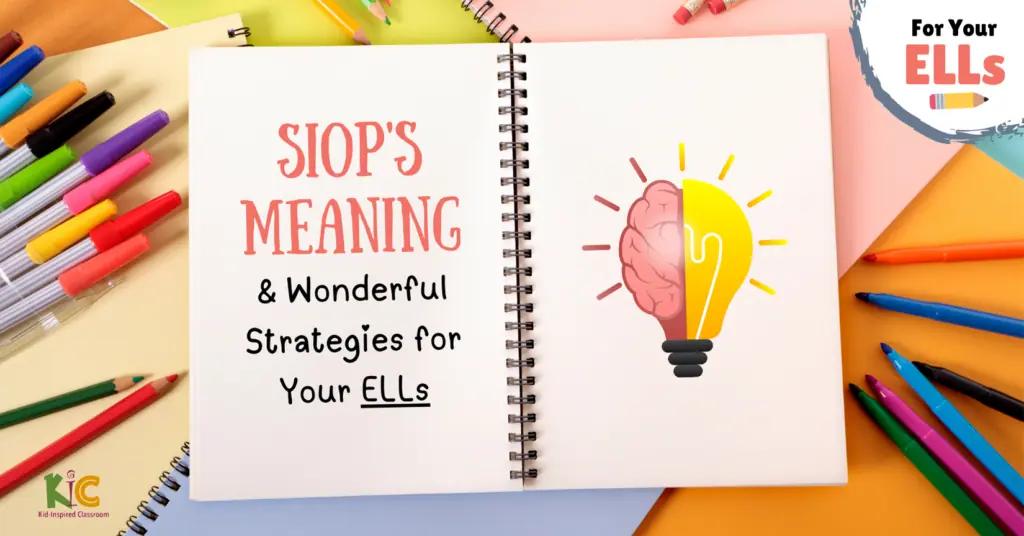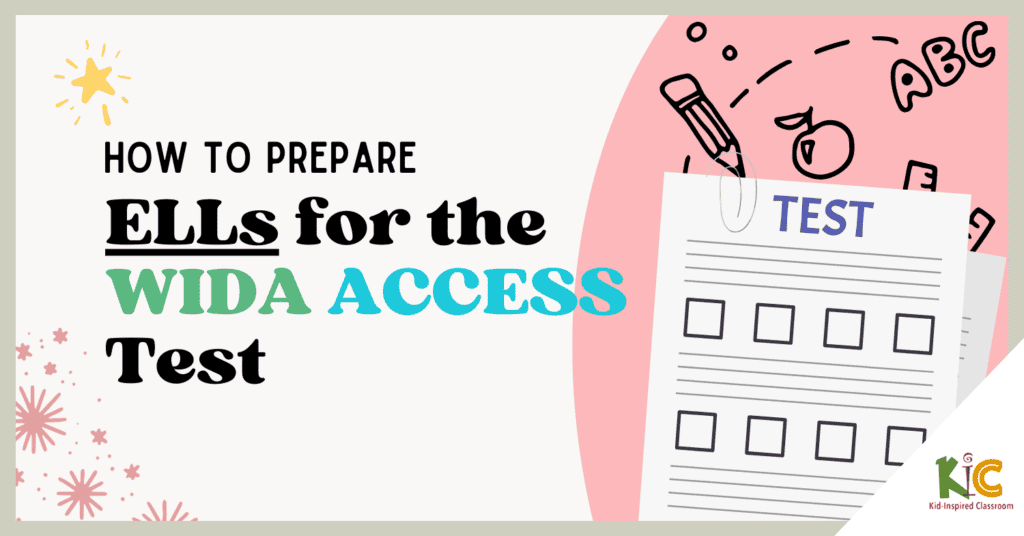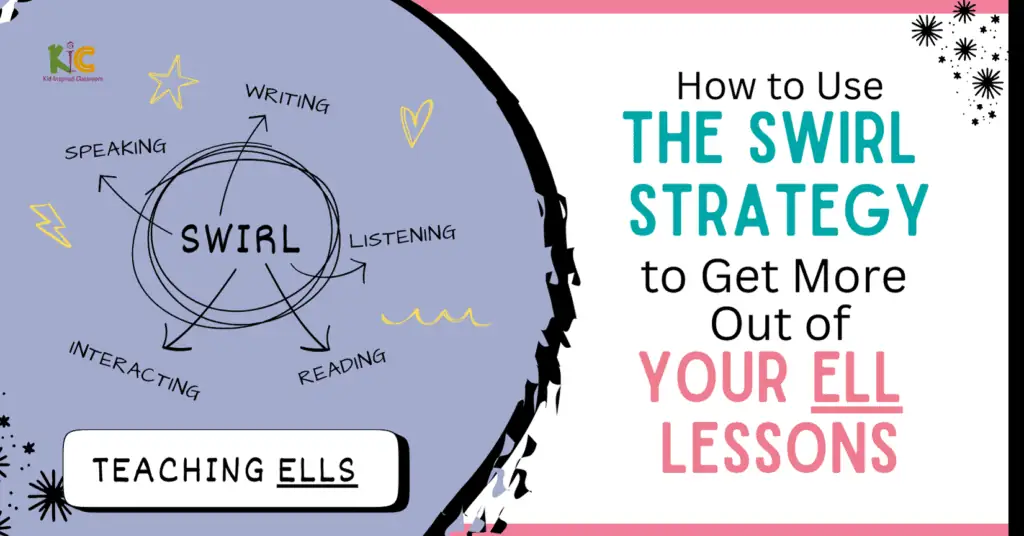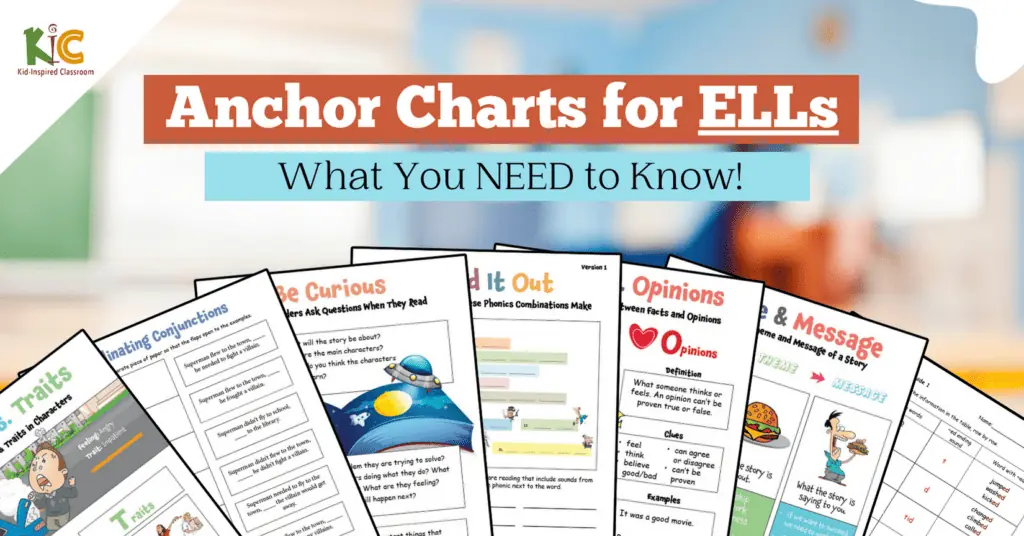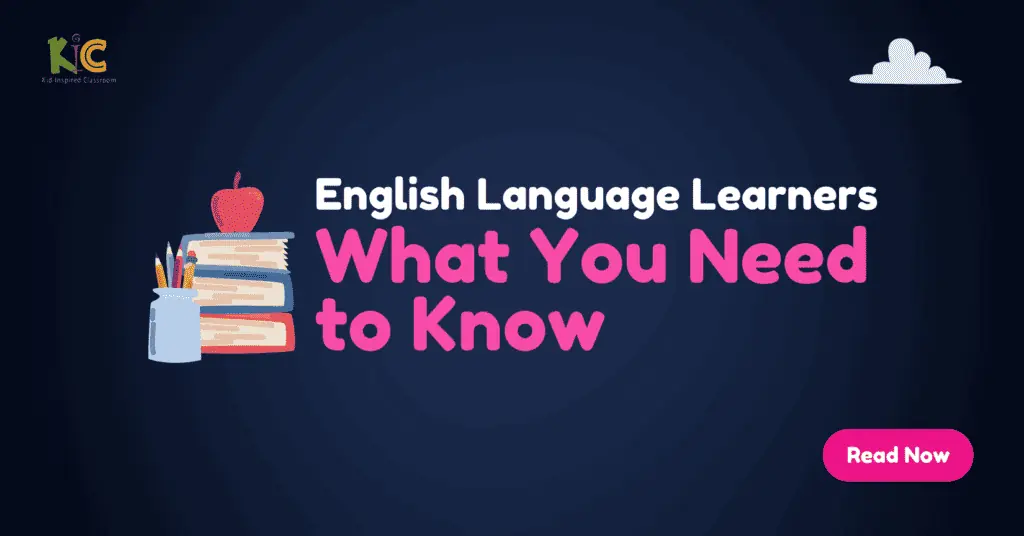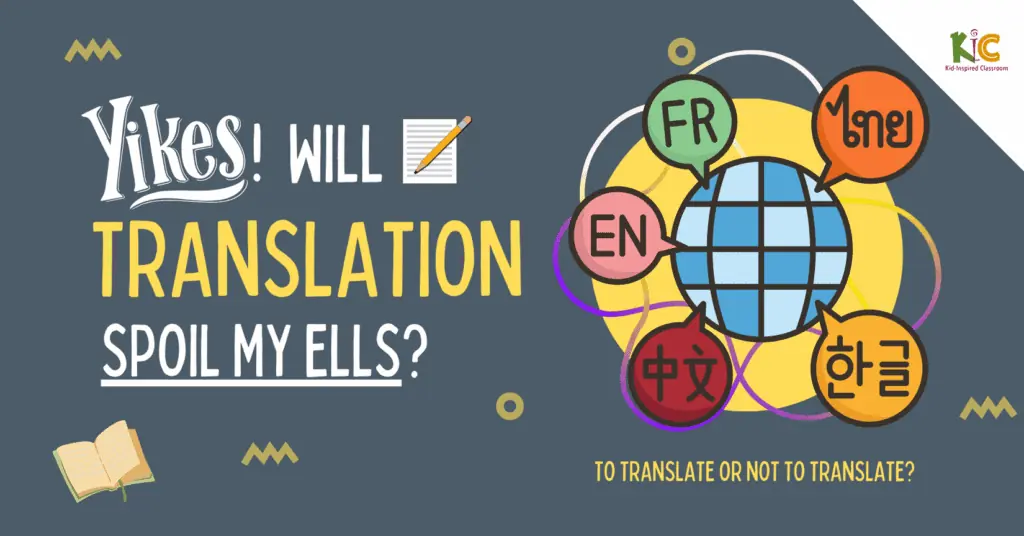
Teaching ELLs at multiple grade & proficiency levels in the same class?
It’s not easy.
It can feel like trying to teach 10 different classes at the same time.
Since current technology does not allow you to clone yourself ten times in order to meet the challenge, let’s take a look at some other options.
Let’s get started!
Gradual Release of Responsibility Model (with Some Tweaks)
My favorite overall structure for a class is the Gradual Release of Responsibility model with some tweaks.
With this model, you’ll move through the following sequence during the course of a lesson:
Whole Group -> Small Groups -> Individuals
As you go, you are gradually releasing more and more responsibility to the students to master the content of the lesson.
BUT!
The content and objectives you choose for your lesson matters…A LOT.
We’re talking about how to manage students at different grade and proficiency levels, so how do you choose which objectives to use with them?
GOOD QUESTION.
KEY: Carefully choose specific, concrete, measurable goals your average students in the class can reasonably achieve in the time you have.
I’ve talked about this in much more detail in this in the following places if you need some more help in choosing goals:
AFTER choosing your goals for a lesson, you can get started teaching.
First, you teach your students what they need to know at the whole group level. You want to keep this as succinct as possible and get as much group participation from your students as possible. Many teachers talk for the majority of time and only give their students a very short amount of time to actually practice. This needs to be reversed. Tell them what they need to know. Add something like TPR (Total Physical Response) actions to the key points so that all students are participating during your discussion.
Second, split up into small groups to practice what you just taught them. You can often make this a fun game of some sort to keep students engaged. Just be sure that all students in each group are actually participating and getting plenty of practice with the objectives.
Finally, require each student to pass a final goal or challenge on their own individually. They should be able to show some kind of mastery of the content without the help of anyone else. This can be done in all sorts of ways including writing, making a poster, or meeting with you one-on-one for a discussion-based assessment. If a student still needs more practice with the objective, they can practice some more and try again to pass the final goal or challenge.
Those who complete the goal(s) get game time while the rest of the students work towards completing the goal(s).
For students at a higher proficiency level who will likely complete the goals quickly and easily, you can give extra materials with extra rewards of some kind.
For students at a lower proficiency level, you can scaffold the goal(s) so that they are able to step up to the challenge or at least complete first steps required toward achieving goals like it in the future.
There are so many supports you can use to help your ELLs at a lower proficiency level to scaffold up to a higher level. Check out the massive list of 63 supports for ELLs below:
With this strategy, you are able to focus on teaching content well and not driving yourself crazy by trying to teach 10 classes at the same time.
The Kid-Inspired ESL Curriculum works well with this strategy since the lessons all include scaffolds for lower-level students as well as extra resources for higher proficiency-level students.
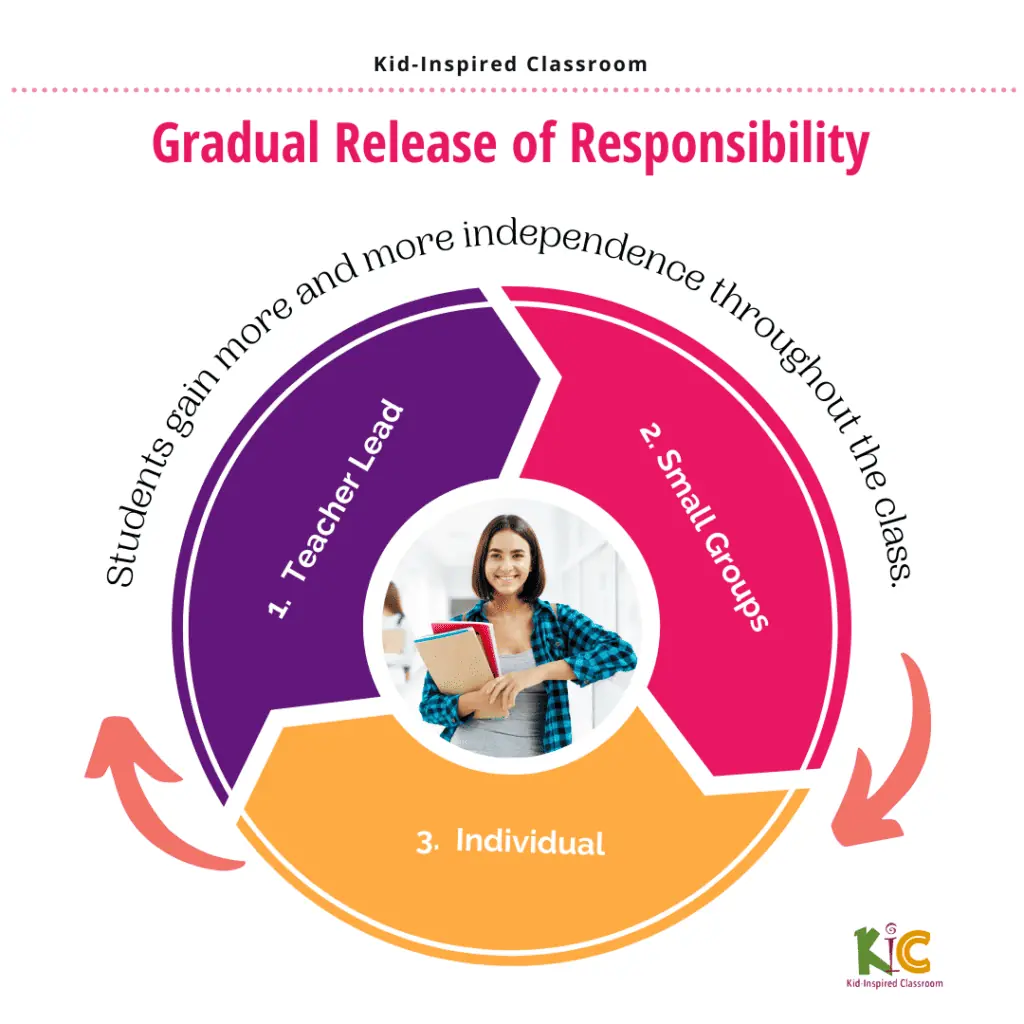
Small Groups Model
Another strategy is breaking up into small groups based on grade and/or proficiency level and then giving different content to each group.
This is the go-to strategy for many ELL teachers.
Breaking off into groups can definitely be a good strategy to differentiate for different abilities, especially if students have such a wide range of abilities.
BUT! BE CAREFUL!
YOU ARE ONLY 1 TEACHER…NOT SEVEN.
If students are put in groups… and are unsure of what to do or cannot learn the content on their own without help… asynchronously apart from the rest of the class… they’re all going to need help AT THE SAME TIME.
FURTHERMORE…
If students don’t know how (or are unmotivated to) be productive in small groups, you can also end up running around like crazy trying to keep everyone on track only, exhausting yourself, only to discover that the class accomplished very little despite all of that effort.
SO…
With this strategy, you NEED TO INVEST a fair amount of time up front training students first on how to stay productive in small groups before you can really dig into any real content.
I HIGHLY RECOMMEND…
Practicing how to practice in small groups with simple quick goals can be a great way to set expectations for when you assign more challenging tasks and need students to work independently. You can also reward those groups who achieve the goal with a quick, fun game or points of some kind to help create some motivation, but you’ll likely find that there will be some good group satisfaction from simply achieving something together.
Even after training students, you will still need to spend time with each group to get them going with the content and goals you want them to complete. You have to get a little creative with this. You can provide groups with reading or a video to stay occupied while you meet with each group to go over what they need to accomplish. Once you have met with a group, they can work on completing the goals/challenges you have given them.
For this strategy, you need good resources at different grade and proficiency levels for each group.
The Kid-Inspired ESL Curriculum works well with this strategy as well since there is a wide range of levels included with the curriculum. Each group can work through a different level’s content at their own pace, going up through the lessons and units in order, checking in with you as they complete content.
You can view the Scope & Sequence for the Kid-Inspired ESL Curriculum here ->
Other Resources Available
There is a lot more than can be said on this topic, of course.
Here are a few resources that might be helpful:
Book: Most in-depth
Kid-Inspired Teacher – Book on How to Organize Wildly Productive Lessons with Your ELLs ->
Articles:
- Overview of Strategies & Resources for Teaching ELLs ->
- How to Set Goals for English Learners ->
- How to Make Whole Class Time More Effective ->
- How Your Stronger Students May Be Affecting Your Effectiveness ->
Curriculum:
Throughout this article, I’ve referred a number of times to the Kid-Inspired ESL Curriculum since it was designed with the flexibility to help teachers meet the challenge of working with ELLs at multiple grade and proficiency levels.
There are 2 options: the basic ESL Curriculum Membership & the Interactive Online ESL Curriculum Membership (which includes everything from the basic membership but also includes landscape PPT slides and hosted interactive slides that can be projected on a smart board or used when teaching online).
Kid-Inspired ESL Curriculum Membership ->
I’m guessing you also have some great ideas! Let me know in the comments below!
All my best to you and your students!
